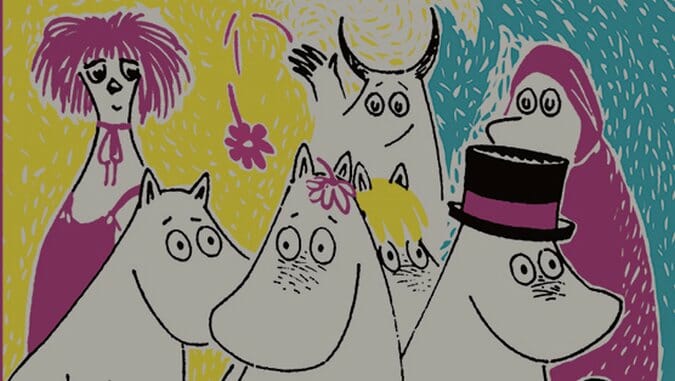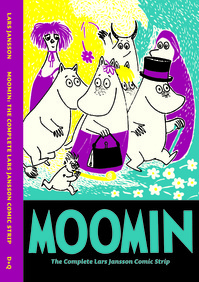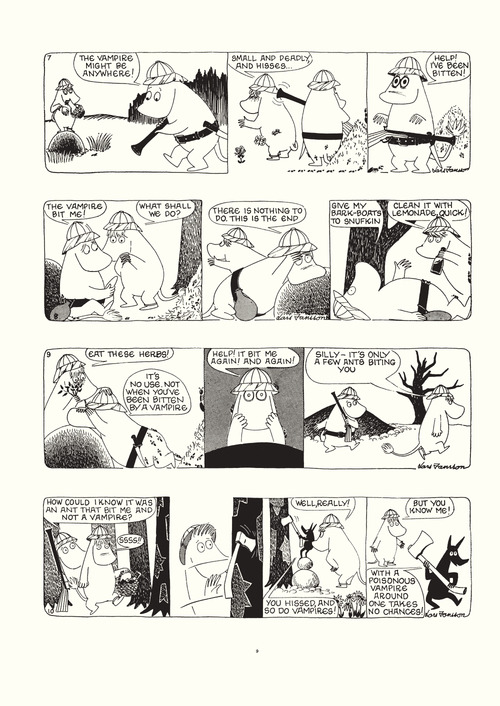Moomin Book 10: The Complete Lars Jansson Comic Strip

When his sister, Tove, ended her tenure on the Moomin comic strip she created, author and translator Lars Jansson taught himself to draw. He took over the Finnish title from 1960 to 1975 (twice as long as his sister), assuming stewardship for the Moomins, a family of hippo-like trolls that humorously struggle to make sense of the world around them. (Confusingly, Moomin is also the given name of the youngest member of the family.) Lars’ work features less hatching, but is an effective imitation of his predecessor. The run also instills a sense of continuity, as the strip was handed down from one sibling to the other. Like his sister, Lars favors a four-panel format that recalls Charles Schulz’ Peanuts, with an occasional alteration to three-panel layouts, depending on the story.
Drawn & Quarterly’s 10th volume in its series of Moomin reprints collects four stories by Lars—all the strips published during 1964—that also serve as solid representations of his style. Each chapter is a shaggy dog that twists and turns and branches off into strange, banal directions that allow the cartoonist to demonstrate his abilities as a raconteur and humorist. While Lars’ thin, scratchy line is admirable, he lacks the compositional skills of his sister, and his acting doesn’t hold as broad a range. That’s not to demean his skill—the cartoonist’s art stacks comparably to most illustrators (especially current ones), but he’s never more than an able imitator. But as someone who had only been practicing for five years at that point, Lars still impresses—no mistake. He also realizes that aesthetics aren’t everything, allowing his writing (including his writing with images) to shore up his weak spots.
-

-

-

-

-

-

-

-

-

-

-

-

-

-

-

-

-

-

-

-

-

-

-

-

-

-

-

-

-

-

-

-

-

-

-

-

-

-

-

-











































